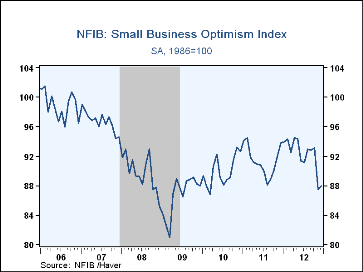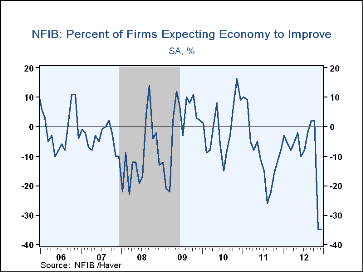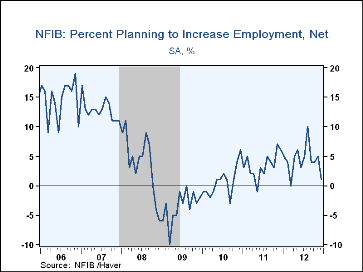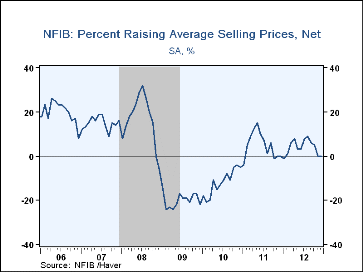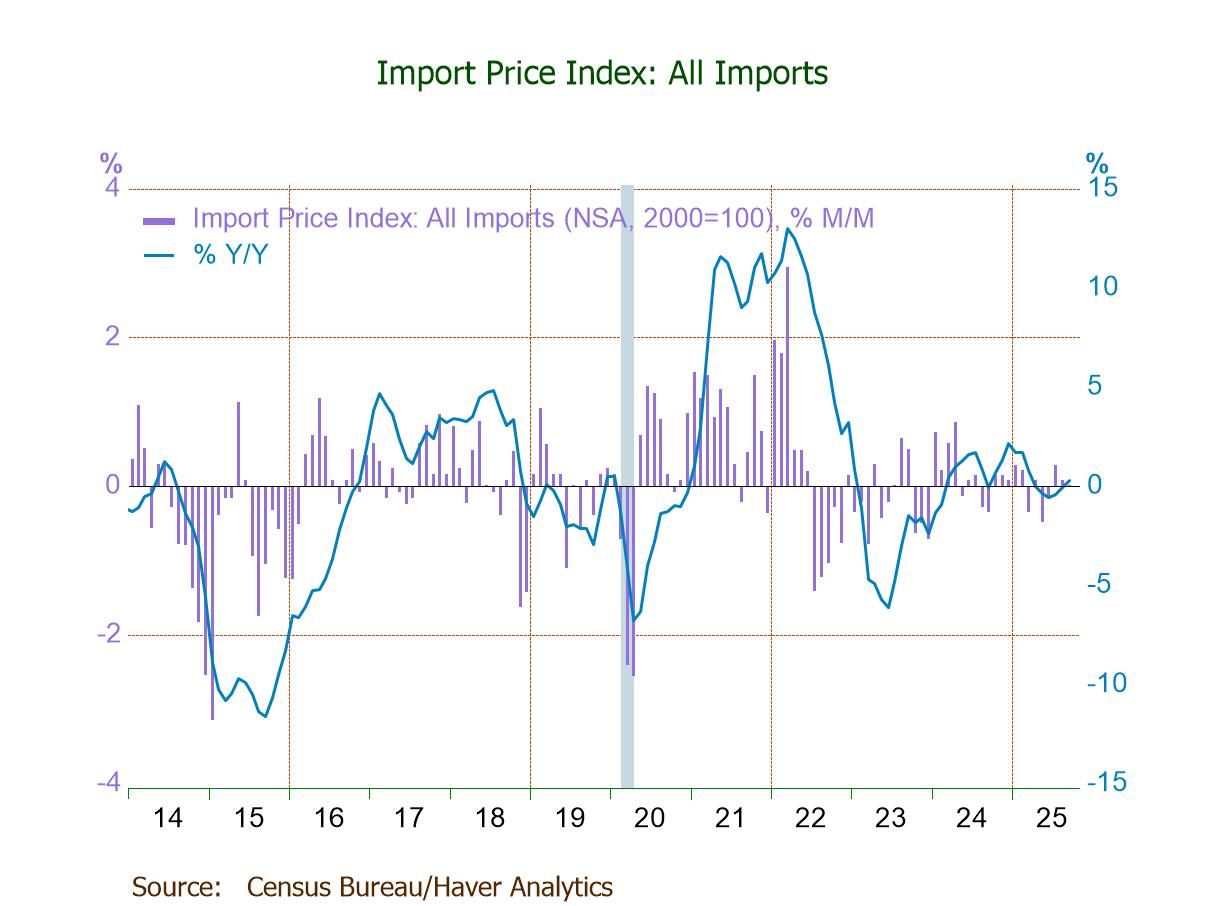 Global| Jan 08 2013
Global| Jan 08 2013U.S. Small Business Optimism Remains Guarded
by:Tom Moeller
|in:Economy in Brief
Summary
The National Federation of Independent Business indicated that its December index of Small Business Optimism held near its lowest level of the economic recovery. The figure ticked up to 88.0 following its unrevised November plunge to [...]
The National Federation of Independent Business indicated that its December index of Small Business Optimism held near its lowest level of the economic recovery. The figure ticked up to 88.0 following its unrevised November plunge to 87.5. For 2012 as a whole, optimism rose modestly to its highest level of the economic recovery. A net negative 35% of firms continued to expect the economy to improve, a record low. The percent expecting higher real sales in six months remained at a low -2%. Just 1% percent of firms planed to increase employment and a relatively low 20% planned on increasing capital expenditures.
The percentage of firms planning to raise worker compensation remained low at 5%, down from its February high of 12%. The percentage of firms reporting that credit was harder to get held at 9%, its highest level in nine months but still down versus the early-2009 high of 16%. No firms were lifting average selling prices. The stable 16% planning to raise prices was down from the recovery high of 24%.
The most important problems faced by small business were taxes (23%), government requirements (21%), poor sales (19%), insurance cost & availability (8%), competition from large businesses (8%), quality of labor (5%), inflation (4%), cost of labor (3%) and financial & interest rates (1%).
Roughly 24 million small businesses exist in the U.S. and they create 80% of all new jobs. The typical NFIB member employs 10 people and reports gross sales of about $500,000 a year. The NFIB figures can be found in Haver's SURVEYS database.
| National Federation of Independent Business | Dec | Nov | Oct | Dec'11 | 2012 | 2011 | 2010 |
|---|---|---|---|---|---|---|---|
| Small Business Optimism Index (SA,1986=100) | 88.0 | 87.5 | 93.1 | 93.8 | 92.2 | 91.4 | 89.9 |
| Firms Expecting Higher Real Sales In Six Months (Net %) | -2 | -5 | 3 | 9 | 2 | 3 | 1 |
| Firms Expecting Economy To Improve (Net %) | -35 | -35 | 2 | -8 | -9 | -9 | -1 |
| Firms Planning To Increase Employment (Net %) | 1 | 5 | 4 | 6 | 4 | 3 | 1 |
| Firms With Few or No Qualified Applicants For Job Openings (Net %) | 33 | 36 | 38 | 34 | 35 | 32 | 27 |
| Firms Reporting That Credit Was Harder To Get (Net %) | 9 | 9 | 7 | 8 | 8 | 10 | 13 |
| Firms Raising Avg. Selling Prices (Net %) | 0 | 0 | 5 | 0 | 4 | 5 | -12 |
Tom Moeller
AuthorMore in Author Profile »Prior to joining Haver Analytics in 2000, Mr. Moeller worked as the Economist at Chancellor Capital Management from 1985 to 1999. There, he developed comprehensive economic forecasts and interpreted economic data for equity and fixed income portfolio managers. Also at Chancellor, Mr. Moeller worked as an equity analyst and was responsible for researching and rating companies in the economically sensitive automobile and housing industries for investment in Chancellor’s equity portfolio. Prior to joining Chancellor, Mr. Moeller was an Economist at Citibank from 1979 to 1984. He also analyzed pricing behavior in the metals industry for the Council on Wage and Price Stability in Washington, D.C. In 1999, Mr. Moeller received the award for most accurate forecast from the Forecasters' Club of New York. From 1990 to 1992 he was President of the New York Association for Business Economists. Mr. Moeller earned an M.B.A. in Finance from Fordham University, where he graduated in 1987. He holds a Bachelor of Arts in Economics from George Washington University.


